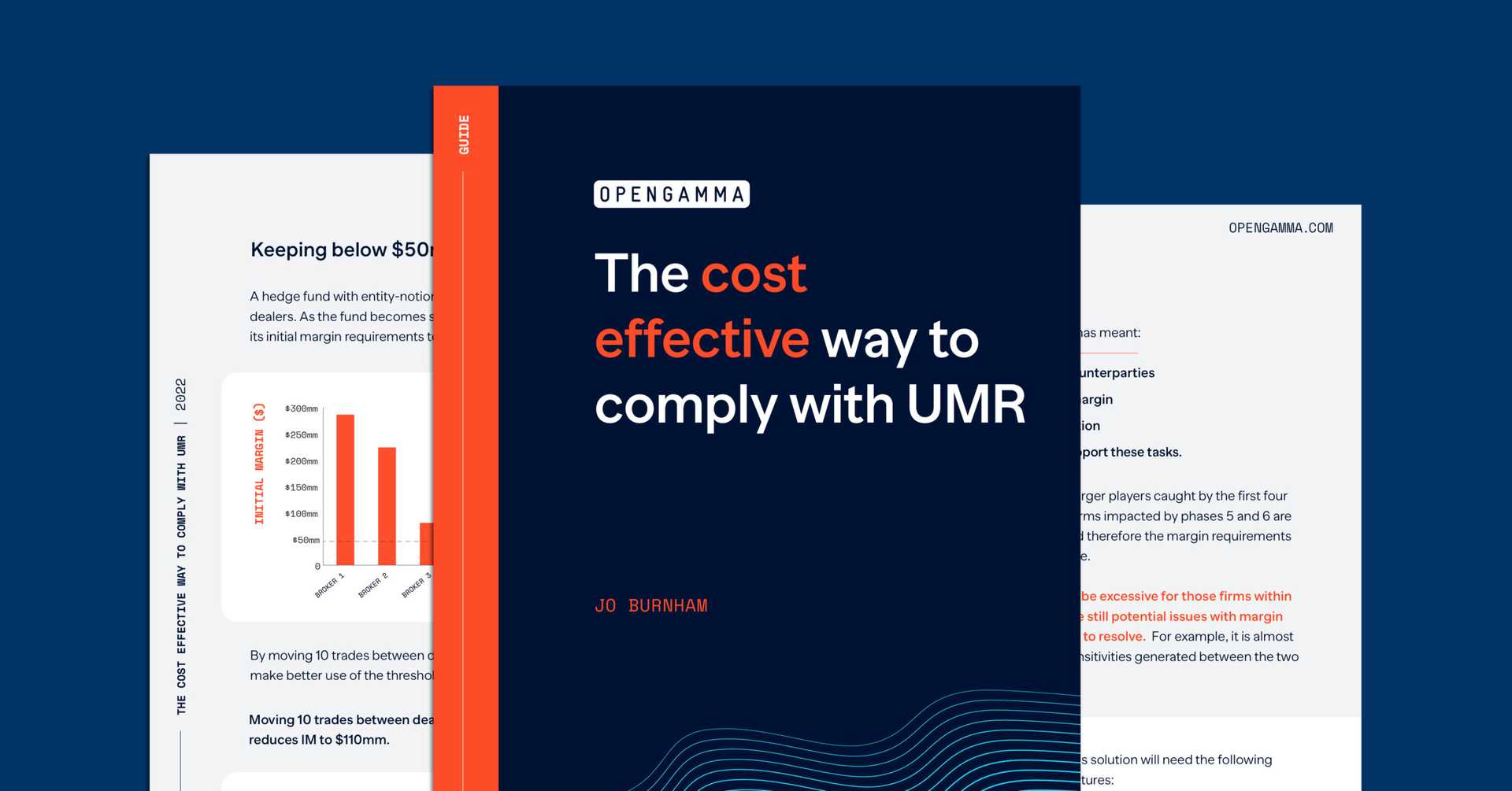Dates can very quickly creep up on you. And the introduction of UMR Phase 6 is no exception. The go live date of September 2022 is only months away and firms will already have completed the first of their AANA calculations to confirm whether they are in scope.
The question now is what do firms need to be doing? What steps should they be taking to make sure that they are ready for September? Depending on the size of their “relationships” this could be monitoring AANA, calculating margin and checking that it remains below the threshold, or optimising margin to prevent the need to set up collateral arrangements.
Firms with higher risk profiles who are going to be in a position where they will need to exchange margin will want to ensure that this is as efficient a process as possible. They will want to optimise the margin paid, maybe looking at the possibility of moving to clearing. They will also need to validate the margin that they are paying to their counterparties.
AANA Calculations
Firms likely to be in scope of UMR Phase 6 should already have commenced the AANA calculations required to confirm this. This is a complex process with the exact requirements dependent on the jurisdiction of the firm and their counterparties. Differences exist for the calculation period, the methodology and the products that are in scope.
Some firms may have found it harder than they expected to calculate AANA. The guidance provided is not always clear, for example what notional should be used for products with multiple notional legs. Similarly firms need to decide whether a fund should be classed as an independent entity, and for multi-manager funds there can be issues with consolidating the calculations.
On the assumption that firms have managed to complete the first period of their AANA calculations, unless firms are looking to change their trading strategies over the next few months, they should have enough information to know whether they are likely to be in scope or not, and should now be looking to ensure that they are ready for September.
Margin Monitoring
If the AANA calculations have shown that a firm is over the $8bn AANA level, then it is important that they start monitoring their margin levels. Keeping below the $50m threshold means not only that firms don’t need to exchange margin, but possibly more importantly, when we are this close to the September start of Phase 6, that they don’t need to put in place the arrangements for transferring collateral.
Monitoring margin requirements means being able to calculate the margin across all relationships and comparing this with the $50m threshold. This requires support for the chosen margin algorithm – Grid or SIMM. And if SIMM is being used then analytics are required to calculate the required sensitivities, which depending on the products traded could necessitate a large range of pricing functions.
When monitoring against thresholds it is also good to track margin trends, so that you can assess how quickly you are likely to reach the $50m level. Here, having a visual representation of margin levels over time can prove useful.
And if firms do find themselves approaching the threshold they will need to look at margin optimisation.
Margin Optimisation
The existence of the $50m UMR threshold is one of the most useful tools in margin optimisation. If you can keep below this level for all counterparties then no margin needs to be paid. Having the ability pre-trade to decide where to place business can save millions. And also if margin can be kept below the threshold it negates the need to set up the collateral arrangements for exchanging margin.
As the trades captured by UMR build up it may become harder to stay below the $50m level. At this point it could be useful to consider moving to clearing. For some more complex trading strategies this may require looking at alternative ways to represent the risk as generally only vanilla products are cleared. The choice of clearing venue and broker also needs to be taken into account.
Moving to clearing also removes the need for one of the more complex requirements of UMR – margin validation. Although firms should still ensure that any cleared margin that is being calculated is correct as mistakes can be made.
Margin Validation
UMR margin is a two-way exchange, and the values calculated will not be the same for each counterparty. This margin needs to be validated.
The firms involved in earlier phases could afford to implement complex external systems to complete a detailed level of reconciliation. However, for the smaller firms captured by Phase 6 this is neither practical nor cost effective.
But there are simpler and cheaper ways of meeting the requirement for validation. We outlined possible alternatives in our earlier blog: What you need to do to be ready for UMR margin reconciliation.
Want To Know More About UMR Phase 6?
If you want to know more about what you should be doing to be ready for UMR Phase 6 then you should look at our eBook: The cost effective way to comply with UMR. This is particularly important for the smaller firms who are going to be caught by this phase who will have fewer resources available to them compared with firms involved in earlier phases.
You can also find out more here – ISDA: Countdown to Phase 6 Initial Margin



